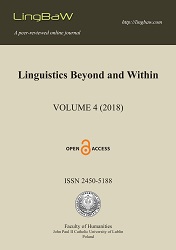Auxiliary clitics in Polish
Auxiliary clitics in Polish
Author(s): Dorota JagódzkaSubject(s): Morphology, Syntax, Comparative Linguistics, Western Slavic Languages, Eastern Slavic Languages, South Slavic Languages
Published by: Wydawnictwo KUL
Keywords: clitics; Slavic languages; inflection;
Summary/Abstract: Polish auxiliary clitics constitute an interesting set of data which draws attention to cross-linguistic differences among Slavic languages. A general principle for clitic placement in Indo-European languages is the one described by Jacob Wackernagel in his 1892 work. He concluded that clitics appeared in the second position in the clause, after the first word in a sentence. This pattern was true to some degree in Old Church Slavonic and still holds for a number of contemporary Slavic languages e.g. Serbo-Croatian, Slovene, Czech and Slovak which have second position clitics. Bulgarian and Macedonian have verb adjacent pronominal clitics and Polish has auxiliary clitics (Migdalski 2007, 2010, Pancheva 2005). Also in the older versions of Polish language the above mentioned tendency was strong. In Modern Polish auxiliary clitics attach to the l-participle most frequently. However, one of the unusual properties they possess is the ability to choose almost every clausal element for their host. Polish auxiliary clitics can trigger morphophonological alternations on their hosts, which is an affix-like property; however, at the same time they display clearly clitic-like behaviour when they attach freely to words of any lexical class. The aim of this paper is to present and analyze the morpho-syntactic properties of two kinds of auxiliary clitics: bound and free. The bound clitics carry person-number agreement markers for past tense (the so called ‘floating’ or ‘mobile’ inflections). The free clitic is the morpheme by used for conditional and subjunctive mood.
Journal: Linguistics Beyond and Within (LingBaW)
- Issue Year: 4/2018
- Issue No: 4
- Page Range: 63-78
- Page Count: 16
- Language: English

